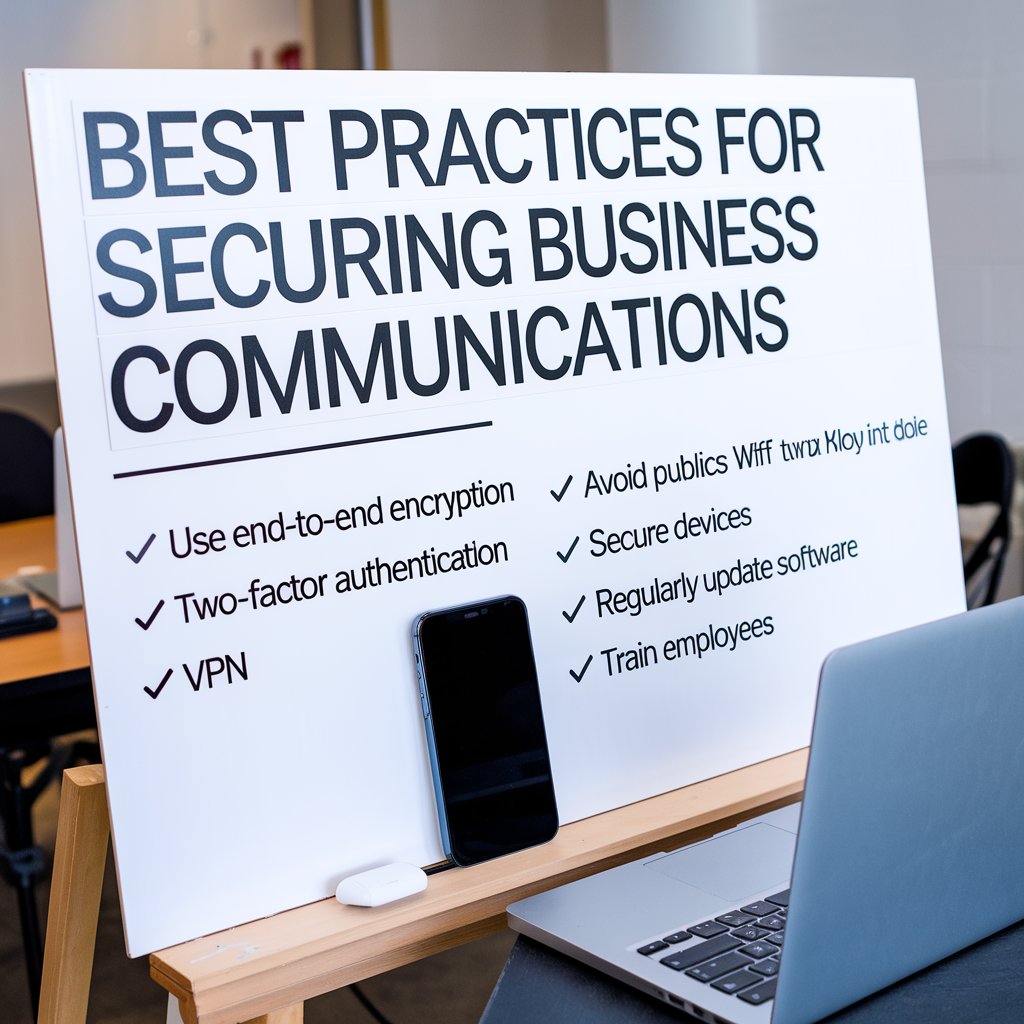UA
5 Min Read
This post will provide you with practical best practices to safeguard your business communications, ensuring your conversations remain confidential and secure.
Why Securing Business Communications is Crucial
Before diving into the specifics, let’s understand why securing business communications is so important:
Protecting Sensitive Information: Safeguarding confidential business data, financial information, and customer details from unauthorized access.
Maintaining Reputation: Avoiding the reputational damage associated with data breaches and security incidents.
Ensuring Compliance: Meeting regulatory requirements for data privacy and security.
Preventing Fraud and Cyberattacks: Reducing the risk of phishing attacks, malware infections, and other forms of cybercrime.
Preserving Business Continuity: Ensuring that communication channels remain operational during a security incident.
Building Trust: Creating a safe and reliable communication environment for employees, customers, and partners.
Best Practices for Securing Business Communications
Here are actionable steps you can take to strengthen the security of your business communications:
Secure Email Communication:
Use Strong Passwords: Require employees to use strong, unique passwords and enable multi-factor authentication (MFA) for email accounts.
Implement Email Encryption: Use email encryption protocols like S/MIME or PGP to protect the content of emails in transit.
Train Employees on Phishing: Educate employees to recognize and avoid phishing emails and other email-borne threats.
Use Email Filtering: Implement email filtering solutions to block spam and malicious emails.
Secure Email Gateways: Deploy secure email gateways to inspect and filter incoming and outgoing email traffic.
Secure Messaging and Collaboration Platforms:
Choose Secure Platforms: Opt for secure messaging and collaboration platforms that offer end-to-end encryption and other security features.
Control Access: Limit access to messaging platforms based on user roles and responsibilities.
Disable Unnecessary Features: Disable features that are not needed and could pose security risks.
Regular Updates: Keep your messaging and collaboration platforms up to date with the latest security patches.
Data Retention Policies: Implement data retention policies for your messaging platform.
Secure Voice Communication:
Use Encrypted VoIP: Utilize encrypted Voice over IP (VoIP) solutions to protect voice communication from eavesdropping.
Secure Conference Calls: Use secure conferencing platforms that offer encryption and access control.
Secure Call Recordings: If call recording is necessary, ensure that the recordings are encrypted and stored securely.
Secure Video Conferencing:
Choose Secure Platforms: Select video conferencing platforms that offer encryption and robust security features.
Control Access: Limit access to video conferences using passwords or other access controls.
Disable Unnecessary Features: Disable features that are not needed and could pose security risks, such as screen sharing or remote control.
Train Employees: Educate employees on how to use video conferencing platforms securely.
Secure File Sharing:
Use Secure File-Sharing Platforms: Use secure file-sharing platforms that offer encryption and access control.
Control Access: Limit access to shared files based on user roles and responsibilities.
Implement DLP Solutions: Use Data Loss Prevention (DLP) tools to monitor and prevent the unauthorized transfer of sensitive files.
Track File Activity: Monitor file access and sharing activity to detect any suspicious behavior.
Implement Strong Password Policies:
Password Complexity: Require strong, unique passwords that meet complexity requirements.
Password Changes: Encourage or enforce regular password changes.
Avoid Reusing Passwords: Prevent employees from reusing passwords across different platforms.
Password Management Tools: Encourage the use of password managers to securely store and manage passwords.
Provide Security Awareness Training:
Phishing Awareness: Train employees to recognize and avoid phishing scams.
Social Engineering Awareness: Educate employees about social engineering tactics.
Security Best Practices: Train employees on security best practices for communication.
Regular Training: Provide regular security awareness training to keep employees up-to-date on the latest threats.
Monitor Communication Systems:
Log Analysis: Monitor logs for suspicious activity and security incidents.
Intrusion Detection: Implement intrusion detection systems to detect malicious activity in your network.
Real-Time Monitoring: Use real-time monitoring tools to track communication activity and identify security breaches.
Regularly Update Software and Systems:
Patch Management: Keep software, operating systems, and communication platforms up to date with the latest security patches.
Automated Updates: Use automated patching tools to minimize delays and ensure timely updates.
Implement an Incident Response Plan:
Incident Response Plan: Develop and test a comprehensive incident response plan for handling security breaches.
Trained Response Team: Establish a trained incident response team.
Regular Drills: Conduct regular incident response drills and exercises. audit3aa
Join our newsletter list
Sign up to get the most recent blog articles in your email every week.
You can copy our materials only after making sure that your services are safe.
This site is protected by reCAPTCHA and the Google Privacy Policy and Terms of Service apply.










